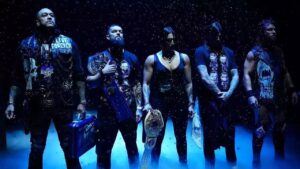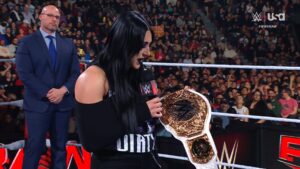The Pioneers is an on-going series looking at some of the earliest pioneers of professional wrestling as we know it, from the wrestlers to promoters to trainers who helped shape professional wrestling around the world. This article looks at an unintentional trailblazer in Japan’s Sadako Igari. What started as a career in vaudeville comedy launched what is now known as Joshi Puroresu.
Today, Japan’s Joshi Puroresu – women’s wrestling – is at its global peak for popularity. With many stand-out promotions, such as Stardom, Sendai Girls, Tokyo Joshi Pro, Gatoh Move, and Marvelous, its become easier to find footage online and stream recent events. Not only that, but many former Joshi stars have made far more successful transitions to the American or British markets in the past decade than at any time before – while All Japan Women’s Pro Wrestling (AJW) saw Bull Nakano breakthrough as a WWE Superstar in the early 1990s, even becoming WWE Women’s Champion, Joshi stars were few and far between in the US market. But thanks to promotions like SHIMMER in the 2000s in the US and Pro Wrestling EVE in the 2010s in the UK, Joshi stars began to resurface in the zeitgeist of Western wrestling fans again, in a movement not seen since the boom of AJW in the 1980s. Since then, WWE has seen Joshi legends like Asuka (formerly Kana), Io Shirai, and Kari Sane (formerly Kairi Hojo) win championship gold, Ring of Honor crowned Sumie Sakai as the first Woman of Honor World Champion, and All Elite Wrestling (AEW) has had Hikaru Shida and Riho both hold their Women’s World title in its brief existence. Its recent AEW Women’s Eliminator tournament featured an entire field that took place in Japan featuring stars from multiple promotions. But it’s taken Joshi a long time to reach this level, and oddly enough, it started before men’s professional wrestling really took off and even stranger, got its start in vaudeville. And the woman that started it all was Sadako “Lily” Ikari.
Born in Tokyo, Japan on March 3, 1932, Sadako Ikari was born into a large family. She was the 9th child in a family that had seven brothers and two sisters. During the Second World War, her oldest brother Noburu “Chopin” Ikari and her youngest brother, Seijiro “Pan” Ikari (known as the Inokari Brothers), founded a vaudeville-style athletic group called Pan’s Sports Show that toured Japan. It was considered a “barnstorming” troop, in that they performed athletic tricks and exhibitions of various sports. By the War’s end, the duo had become quite popular in the entertainment field in the country and decided to add Sadako as a third part of the act. After the war, Japan was flooded with US forces, led by General Douglas MacArthur, to help the county reform its political, economic, and social policies. This increase in presence of American soldiers – most of who had money to spend on their “R & R” weekends – lead to a boom in new forms of entertainment. Utilizing their sister Sadako Ikari, as well as some of her friends, they created the Garter Struggle Show in 1948 as part of their act – in essence, it was a no-ring, no-ropes girl fight, where the girls would pretend to fight each other for the audience’s enjoyment. At her brother’s behest, she was trained in both boxing and judo to enhance her technique. At the time, it was most popular in the strip joints and burlesque houses that were frequent R & R stops for American soldiers. Pro wrestling had never truly caught on in Japan like it did in Europe and North America (despite the best efforts of Matsuda Sorakichi over 60 years earlier), but to US soldiers who had experienced the early days of pro wrestling’s first big boom from the 1930s through the late 1940s, it was a blend of the familiar with the exotic.
Sadako Ikari
In 1952, due to the success of the Garter Stuggle Shows, the Inokari brothers rebranded as All Japan Women’s Wrestling Club, focusing purely on their women’s wrestling stable, which included Sadako Ikari as their feature attraction, as well as early Joshi stars like Katsumi “Rose” Tayama, Hiroi Hojoji, Yumi “Miss Potato” Katori, Yoko Sakurai, Masako Izu, and Yukiko Tomoe (in 1968, Tomoe would defeat Fabulous Moolah for the NWA World Women’s Championship, becoming the first Joshi World Champion). The Inokari brothers hired an amateur catch wrestler, Dr. Elmer Hawkins, who was stationed in Japan with the US Armed Forces where he worked as an Army Surgeon, to properly train their women in wrestling technique. On July 18, 1953, five years after the Inokari brothers had been regularly promoting women’s wrestling matches in Japan, Toshio Yamaguchi holds the first all-Japanese men’s wrestling card promoted by all-Japanese management, and two weeks later, Rikidozan – who had recently returned from an 18-month excursion in the United States to learn pro wrestling – founded the first Japanese men’s promotion, Japan Pro Wrestling Alliance (JWA), a year after the formation of the All Japan Women’s Wrestling Club.
In 1954, Japan would hit its first boom period of pro wrestling, starting in February, when two Canadians arrived in Japan to compete for JWA. The Sharpe Brothers (Ben & Mike Sharpe) were two brothers from Hamilton, Ontario, that had gone to the National Wrestling Alliance (NWA) in the late 1940s and immediately became one of the top stars in the NWA’s newly created tag team division. When they arrived in Japan that February, they were already into their ninth reign as the NWA World Tag Team Champions (the San Francisco version, and from the territory that essentially created tag team wrestling) and were one the first major US wrestling stars to come and compete in Japan. In the main event of the three-night event, The Sharpes would face off against Rikidozan & Masahiko Kimura, becoming a national phenomenon. It aired on TV and thousands of Japanese citizens flooded the streets to watch on televisions in shop windows. Although no women were booked on the three-night extravaganza, Rikidozan would begin booking women’s wrestlers on his cards, usually showcases of the top talents from the various joshi promotions that began to follow in the Inokari brothers’ footsteps, including All Japan Women’s Wrestling Club. The immense popularity of JWA after that event ensured larger crowds were now seeing what joshi had to offer.
The second event in 1954 was the fall arrival of Mildred Burke. That November, Burke – who had recently been blackballed in the US after a fallout with her ex-husband Billy Wolfe – arrived in Japan to expand her own presence. If she couldn’t be a part of the rise of women’s wrestling in her home country, she would do it elsewhere. Burke had been a Women’s World Champion for decades, exploding on the scene in the 1930s. In the carnival days, she was her company’s shooter, and wrestled 200 men in wrestling competitions – she only ever lost one. With the rise of in-ring competition and the debut of television, Burke became the face of women’s wrestling in the US. Sadly, her manager and then-husband Billy Wolfe literally ran all of women’s wrestling in the US and when she left him in 1952 after years of abuse, he blackballed her for most of the remainder of her career. By the time Wolfe passed away in 1963, his stranglehold was passed on to another of Burke’s protegees, The Fabulous Moolah. Burke arrived in Japan with a small group of US wrestlers, that included Mae Young and early Hispanic star Rita Martinez, for a week-long tour of Japan that hit Tokyo, Osaka, Kobe, and Kyoto (eight shows in seven days). With a smaller group of her own wrestlers, Burke relied on filling the bulk of the card with the top stars from the various Joshi promotions. Sadako Ikari appeared on six cards, going a perfect 6-0. A year later in 1955, the Matsunaga brothers – lead by Takashi Matsunaga – created the All Japan Women’s Pro Wrestling Association as a governing body (similar to the NWA in the United States) over the promotions, including All Japan Women’s Wrestling Club and All Japan Women’s Pro-Wrestling Federation. But by 1957, the group was failing and shockingly, the Inokari brothers abruptly left pro wrestling altogether.
Sadly, the collapse of the Association lead to women’s wrestling take a huge step back. From 13,000 seat venues from Burke’s tour three years previous, Joshi once again found itself reduced to showcases at strip joints once again for American GIs. By 1968, the Matsunga brothers had had enough. They withdrew their alliance with the Federation, and launched AJW, which redefined Joshi wrestling and laid the blueprint for Joshi puroresu today. Sadako continued to wrestle sporadically throughout the 1950s and early 1960s, but never went on to big success beyond her heyday in the mid-1950s. But her legacy continues in Japan – in the 1997 anime series Tenchi in Tokyo!, the character Sadako Ikarinu is named in tribute to her. But if not for Sadako Ikari and her interest in joining her brother’s little sports show in the 1940s, Joshi puroresu may have taken even longer to become of Japanese pro wrestling culture.
Check out more of our articles on The Pioneers of pro wrestling.
Stay tuned to the Last Word on Pro Wrestling for more on this and other stories from around the world of wrestling, as they develop. You can always count on LWOPW to be on top of the major news in the wrestling world, as well as to provide you with analysis, previews, videos, interviews, and editorials on the wrestling world.








